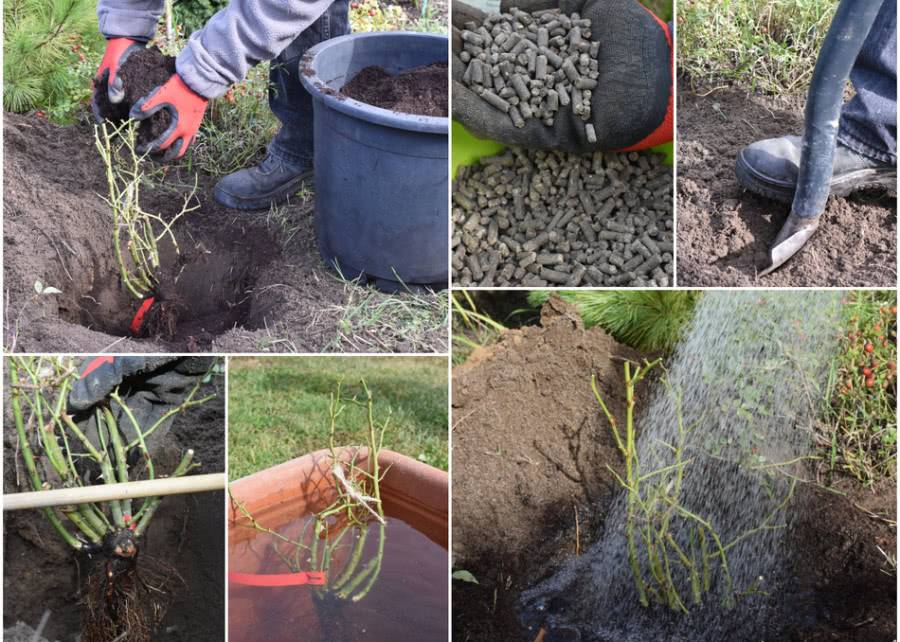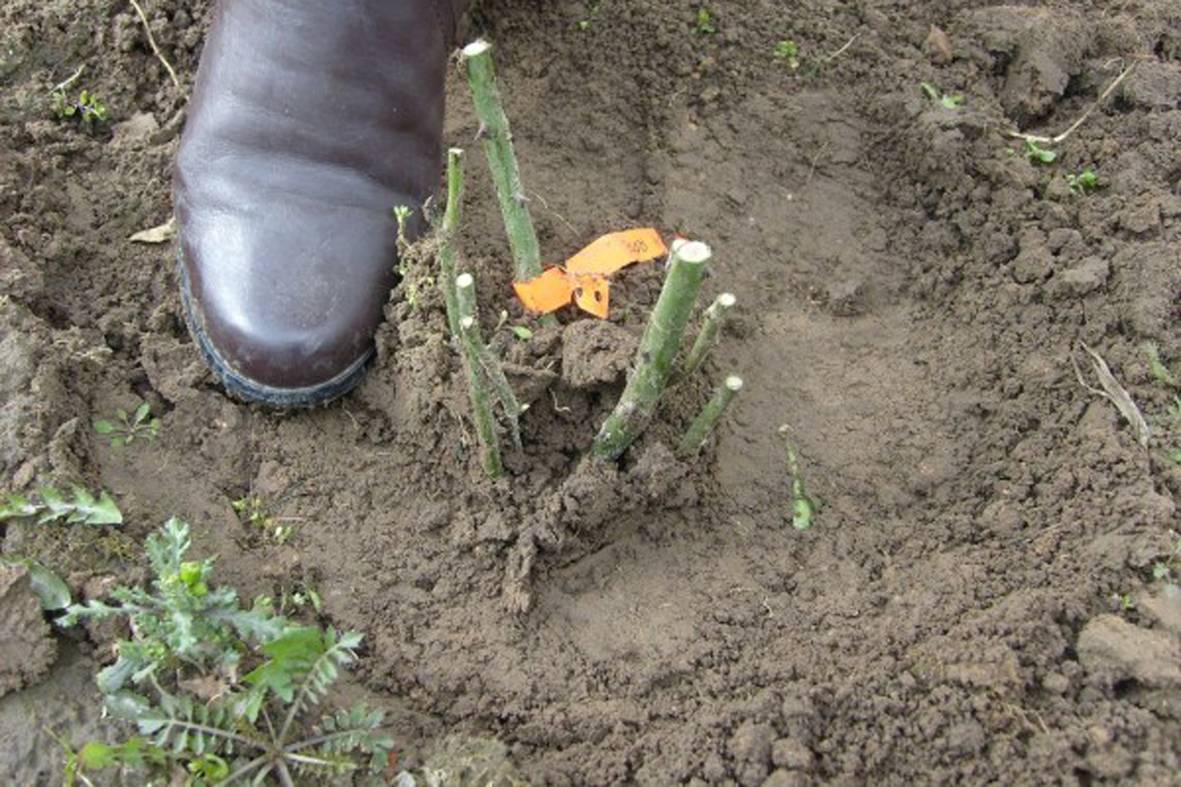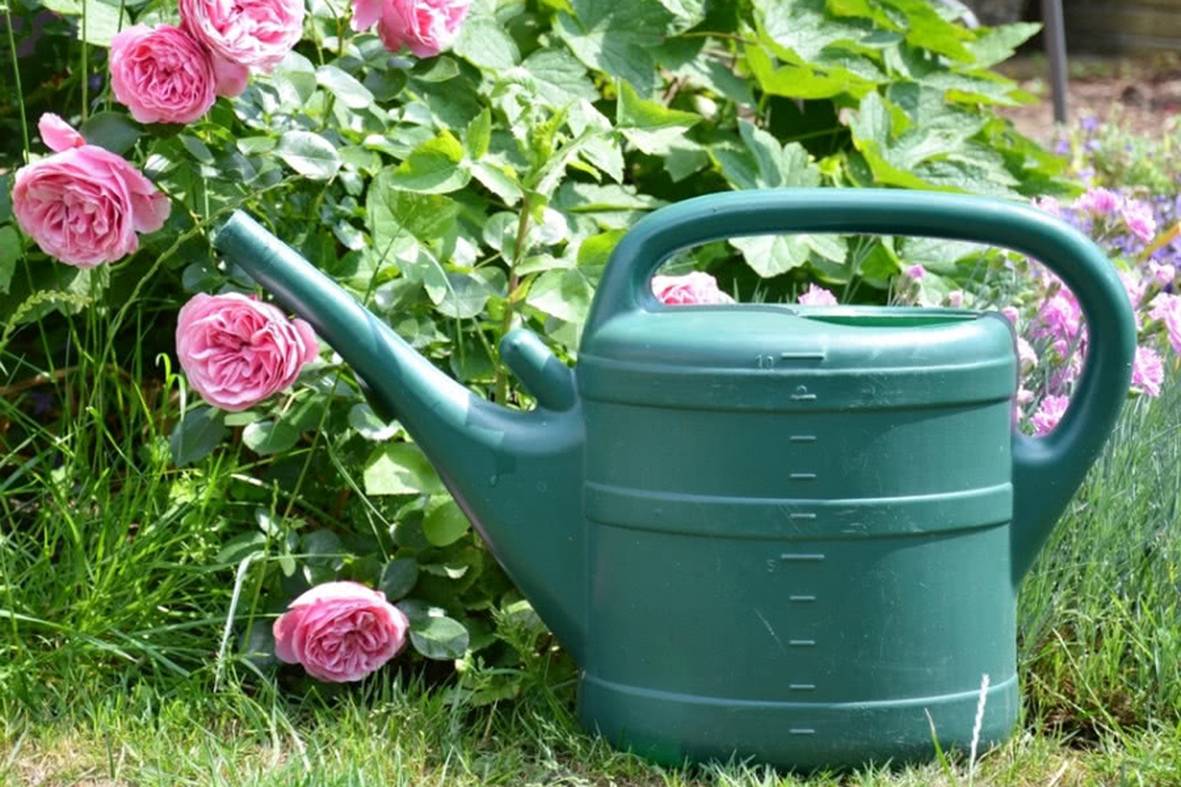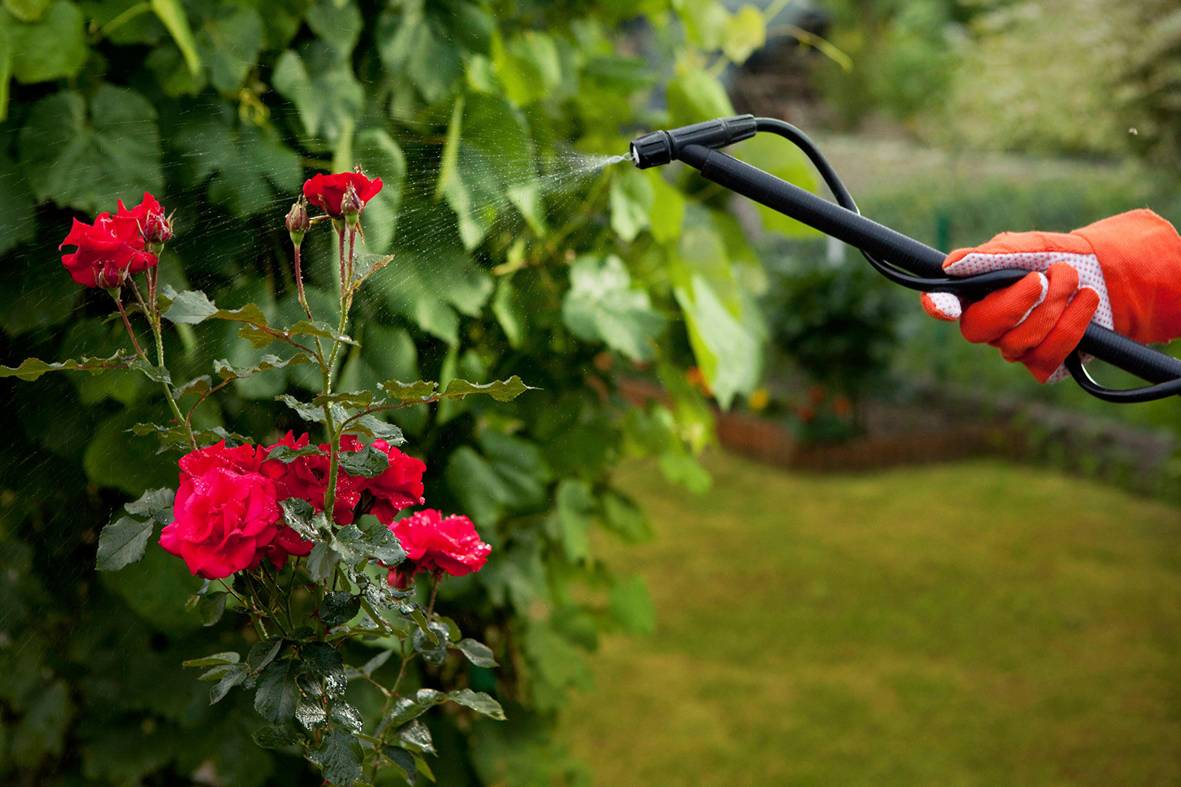Rose Ali Baba (Alibaba)
Content:
There is nothing more enchanting than graceful lashes of roses strewn with flowers. There are many varieties and varieties among climbing roses. The rose of Alibaba (Alibaba, Ali Baba) deserves special attention.
Description of Ali Baba rose
Grown in England by K. Warner, one of the country's leading rose growers, this stunning variety features a large orange-pink color with a captivating fruity aroma.
The variety belongs to climbing roses with repeated flowering. The height of the shoots can reach 3 m. Large flowers are collected in inflorescences from 5 to 10 pcs. on each.
Advantages and disadvantages
Like every variety, the Alibaba rose has both pros and cons.
This variety has quite a few advantages. Each is worth paying attention to, choosing it for the site.
Undoubtedly, the main advantage of this species is the flowers. In addition to the fact that they look just amazing, the bloom of this beauty will delight all summer.
It is also worth noting that, despite the intolerance of many types of roses to the abundance of precipitation, this variety is very resistant to them. Even if rainy weather occurs during the flowering period, the plant does not lose its beauty.
High disease resistance is another advantage of this variety. This rose is very rarely affected by powdery mildew and various spots.
For a climbing rose with an impressive length of shoots, their flexibility is an indisputable plus. Thanks to this quality, the rose can be used to decorate various objects, regardless of the complexity of their shape. The risk of damaging the shoots is minimal.
This variety has fewer disadvantages than advantages. It is thanks to this that she became the favorite of rose growers and received so many awards.
One of the disadvantages is the intolerance of direct sunlight. The plant should be illuminated only in the first half of the day, the afternoon bright sunlight is harmful to it. In bright light throughout the day, the color of flowers fades, and they crumble faster. Leaves may also burn.
Use in landscape design
Due to its exquisite color of flowers, flexibility and impressive length of shoots, Alibaba is often used by landscape designers.
Powerful lashes, covered with large salmon-colored inflorescences, will adorn any landscape composition. Arches, gazebos, walls of houses, entwined with this climbing beauty, will become the highlight of the site.
In combination with roses of shorter varieties, you can create a continuous flowering bright composition. An additional plus will be the aroma, the fragrance of which will not leave anyone indifferent.
To create an English-style flower garden, this variety is just a godsend. It is this rose that can become the main accent in such a composition.
Growing and planting in open ground
The first step to becoming the proud owner of a rose of the Ali Baba variety is to purchase seedlings.
When choosing planting material, you should pay attention to several important points.
- It is better to make a purchase at a nursery or a specialized store. There they are sold in containers or other containers that prevent the roots from drying out and facilitate transportation. Also, the likelihood of an error with a variety is almost impossible.
- Rose seedlings can be either grafted or grown on their own roots. For almost all varietal roses, the choice of grafted seedlings is a priority. They have a more developed root system and increased resistance to diseases and adverse weather conditions.
- The most suitable seedlings for planting are 2-3 years old. By this time, they already have a developed root system and a high rooting ability.
- It is worth paying attention to the leaves and stems. They should be healthy and evenly colored. Stains and any damage are unacceptable.
Pick up time and seat selection
Before proceeding directly to planting, you need to decide on the time of its carrying out. Particular attention should be paid to the choice of location.
Planting dates depend on the climatic characteristics of the region. For Central Russia and for other regions with a temperate climate, planting is permissible both in spring and autumn.
The optimal timing for spring planting is from April 15 to May 20. The disadvantage of planting at this time is the fact that the seedling quickly begins to build up vegetative mass to the detriment of the development of the root system.
A feature of autumn planting is the need to shelter seedlings for the winter. The advantage of the procedure is the ability to get a well-developed bush next year. Rose seedlings planted in autumn bloom the next year after planting.
When choosing a site for planting, you should avoid places with the following characteristics:
- subject to constant exposure to strong winds and drafts;
- flooded with melt water and places of close occurrence of groundwater;
- illuminated throughout the day;
- located under trees and in close proximity to buildings.
All these factors will negatively affect the growth of the rose.
Excessive moisture is detrimental to the root system. It will lead to decay of the roots and the development of fungal diseases. Strong winds can damage tall shoots as well as dry out the soil and deprive the plant of the necessary moisture. The bright afternoon sun negatively affects flowering and can burn shoots and leaves.
The landing site must be sufficiently breathable. Planting too close to buildings will impede free air circulation. Planting under trees will not only deprive the plant of enough sunlight, but it will compete for nutrients in the soil.
Soil preparation
The survival rate of a seedling and its further development directly depend on the composition of the soil. The Alibaba variety is a remontant rose, which is demanding on the composition of the soil. This should be taken into account when landing.
The composition of the soil must necessarily include compost or rotted manure, as well as peat. You also need to add a dose of mineral fertilizers, superphosphate is perfect. If the soil is clayey, it is necessary to add sand, if it is sandy - clay soil.
It is better to prepare the soil on the site for spring planting in the fall, and for the fall - a month before planting.
Seedling preparation
Before planting, the seedlings are carefully examined and all damaged shoots are removed. Also, the roots are slightly pruned, removing the dried ones.
After removing from the container, it is recommended to place the root system in water. You can add a drug to it to accelerate growth.
To prevent moisture loss and provide the roots with nutrition in the first days after planting, the root system is dipped in a clay mash. For its preparation, it is necessary to mix ½ part of clay and 1 part of manure, adding water, to the state of liquid sour cream.
Before planting, the roots must be wrapped in burlap. This will keep it from drying out and protect it from sun exposure.
Landing
Planting young rose seedlings should be carried out strictly following a certain sequence of actions.
- First of all, you need to dig a hole. Its size should be twice the size of the root system.
- To ensure drainage, a layer of gravel or broken brick should be poured onto the bottom.
- Prepared soil is poured into the planting pit with a tubercle.
- The seedling is placed in the center, and the roots are gently spread over the surface of the tubercle.
- The rest of the soil is filled in the hole and the surface is lightly tamped.
- The seedling is watered abundantly. One plant needs 1.5-2 buckets of water.
- The soil surface around the planting is mulched with peat, bark or sawdust.
A support must be installed prior to landing. It should be at least 20 cm away from the planting pit.
Only if the planting technology is observed, it will be possible to grow a healthy plant, which will delight with annual abundant flowering.
Care
Adequate care is very important for the development of the plant. Providing an enabling environment is the key to full-fledged growth. By following a kind of simple care rules, you can achieve success even in growing the most capricious varieties of roses.
Watering
In the first two years after planting, it is necessary to provide the plant with regular and abundant watering. Older bushes require more rare but abundant ones.
Water for irrigation must be settled and not cold. Using a tap from a hose is detrimental to the root system of roses.
Waterlogging should be avoided. It can provoke root rot. Plants over 2 years old are best watered only when the soil dries out.
Top dressing
Regular feeding is very important for remontant varieties of roses. For this, mineral and organic fertilizers are used.
Nutrition occurs due to mineral dressings, and organic matter, decomposing, helps their assimilation.
The main feeding is carried out in three stages.
- In the spring, after removing the shelter, a complex mineral fertilizer is applied. It will promote the formation of shoots and buds.
- In the summer, during the period of active flowering, both mineral fertilizers and organic matter can be applied. In no case should fresh manure be introduced. When using organic matter, the proportions should be strictly observed when preparing the solution.
- After flowering, apply mineral fertilizing. It should be noted that there is no nitrogen in their composition. It can provoke unwanted shoot growth before hibernation.
Pruning and replanting
Pruning climbing roses is the key to successful growth and flowering. It is carried out in three stages - in spring, summer and autumn.
- Spring. Its purpose is to remove shoots damaged after wintering. They also remove those that are necessary for proper shaping. It is needed to force the shoots to curl in a given direction.
- Summer is to remove faded inflorescences.
- Autumn pruning involves removing dried and diseased shoots. In climbing roses, only shoots of the current year and part of two-year ones are left. Before sheltering for the winter, the length of the shoots is shortened by half the length.
Transfer
Under certain conditions, it may be necessary to transfer to another place. For young plants this will not be a problem, but transplanting older plants will be very problematic.
Before transplanting, the shoots are removed from the support and shortened by 2/3 of the length. Next, the root system is removed with a large clod of earth.
The transplanting procedure is identical to that used for planting young seedlings. The timing of these two manipulations also coincides.
Wintering
Climbing rose Ali Baba is not particularly frost-resistant and requires shelter for the winter. If this is neglected, the plant can not only suffer, but also die.
Before laying under cover, the shoots are shortened. It is recommended to treat the lashes with Bordeaux liquid to prevent the development of fungus under cover. After that, the lashes are removed from the support and pinned to the ground.
For shelter, it is better to use an air-dry method. It consists in installing the frame and then attaching the covering material to it. This method will provide free air circulation during the dormant period of the plant.
Bloom
Like every flower, the climbing rose has a period of activity and rest.
The period of active development of this rose variety falls in mid-spring - mid-autumn. Its peak is summer. It is at this time that it is necessary to provide the plant with proper care.
Care during and after flowering
For three summer months, the Alibaba rose blooms actively. During this period, she desperately needs feeding. The introduction of mineral and organic fertilizers at this time is mandatory.
Withered inflorescences must be removed. This procedure stimulates the re-flowering process.
At the end of flowering, the plant should be fertilized with a complex mineral fertilizer. But it should be remembered that the presence of nitrogen in its composition is undesirable.
If not blooming
There are times when it is not possible to wait for abundant flowering, or it is completely absent. There can be many reasons for this. All of them are associated with errors that were made during landing.
The reason for the lack of flowers may be the wrong composition of the soil or the wrong place to place the rose. In this case, you should resort to transplanting the bush to another place.
Reproduction
The most acceptable method for propagating climbing varietal roses is cuttings. The use of this method guarantees the production of seedlings that will be completely identical to the parent plant.
Propagation by seeds does not allow, in most cases, to obtain roses with the required varietal qualities. Obtaining new specimens by rooting cuttings is possible, but as a result, quite a bit of planting material is obtained.
It is most convenient to start preparing planting material in the fall. After shortening the lashes before laying under the shelter, many cut off shoots remain.They can be used for subsequent harvesting of cuttings.
The propagation method by cuttings consists of several stages.
- Shoots cut in autumn, after removing leaves from them, are stored in moist peat or sand at a temperature of 1-2 ° C until spring.
- In the spring, cuttings 10-15 cm long are cut from the shoots. The lower cut is made oblique under the bud, and the upper cut straight above it. The lower part is treated with a growth stimulant solution.
- In April - May, you can start planting in the soil. Depending on climatic conditions, it is produced either in a container or in open ground. Planting is carried out so that there is only one upper bud above the soil level.
- After planting, a film shelter is installed to create a microclimate in the greenhouse.
- As the soil dries up, watering is carried out.
Some of the cuttings will take root by mid-summer.
The grafting method allows you to obtain high-quality planting material, while all varietal characteristics are preserved.
Diseases and pests
The Alibaba rose variety is resistant to common diseases such as powdery mildew and various kinds of spotting. With proper care, the plant practically does not get sick. But if an infection has occurred, treatment with special preparations should be carried out immediately.
The most common pests of roses are aphids, spider mites, caterpillars and thrips. To combat them, as well as for prevention, roses should be regularly sprayed with chemicals.
Agricultural technology and reproduction do not require special skills and efforts. If you follow all the rules for care, it is quite possible to grow a healthy and luxuriantly flowering plant. This variety is widely used in landscape design. This is due to the high decorative qualities of the Alibaba rose. Having planted this beauty in the garden, you can enjoy beautiful flowers and their unique sweet aroma all summer long.






















